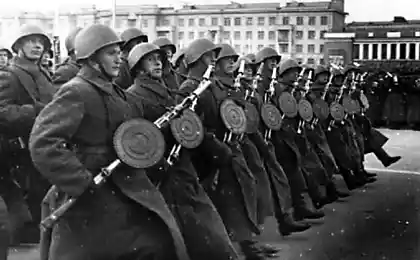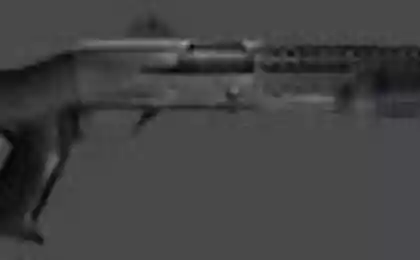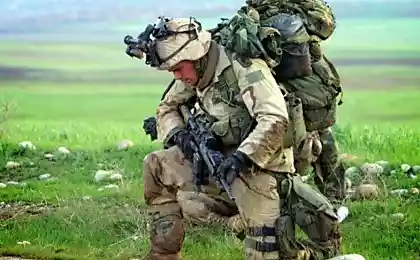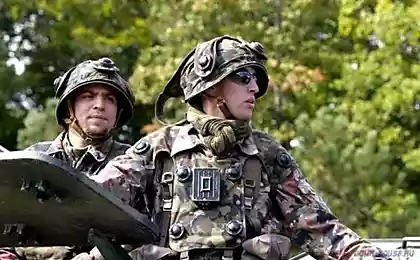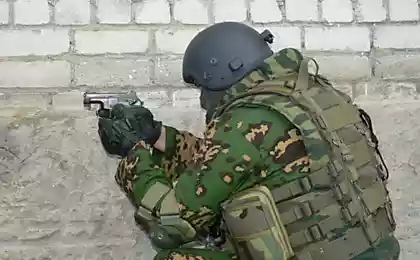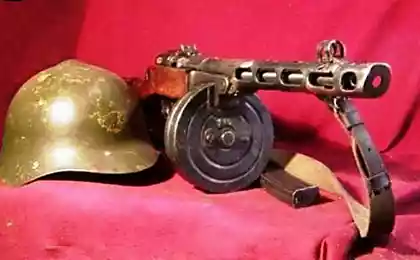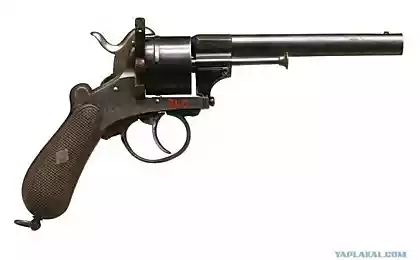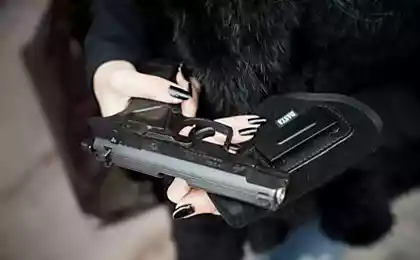1153
A little bit about the equipment of the army of the Russian Federation
I'll start with uniform odezhdy.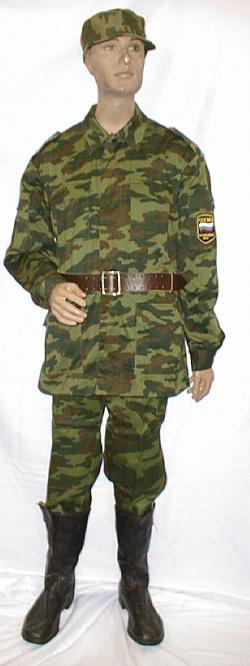
on mannequin wearing field uniform color "Flora"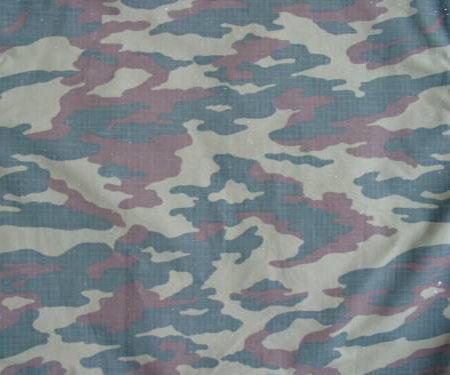
Flora - the most common colors of camouflage Russian military. Drawing creates optical illusions dissolve the silhouette as a close and at a distance against the backdrop of the nature of central Russia, but is not well suited for the mountains of the Caucasus. Developed in the late 90s, it has some similarities with the Soviet coloring "Bhutan" and the American "tiger."
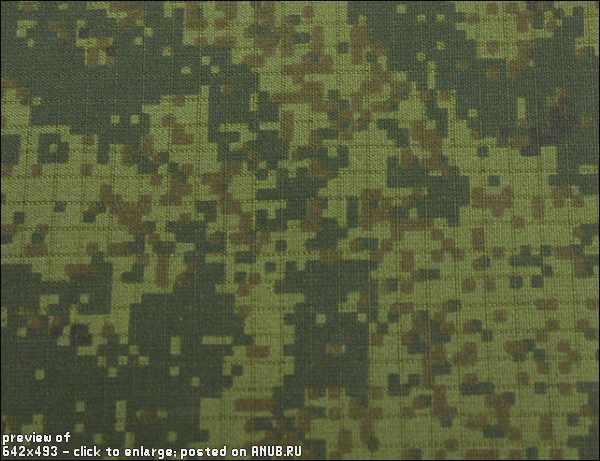
Russian Digital camouflage. "Digital Flora" - a new pixel camouflage for the Russian Armed Forces.

Steel Helmet (USA-68) spread from the Soviet army and used seychas.Nepriyatny secret: helmet, known to us for Personnel movies and news from the hotspots, protects the soldier's head slightly better than usual hats ushanki.Na tests combined arms helmet Russian army school -68, which for 40 years to protect the head of our infantry, in which he is being fired from a Makarov pistol from a distance of 5 meters, it became clear that conventional steel bullet fired from far the most powerful gun helmet hit Bang Bang! I wonder what will happen when the helmet will head soldier.
Scientists Research Institute conducted an interesting experiment began: from what distance the legendary school-68 still be able to hold at least a bullet legendary Makarov. It was found that the bullet helmet hold only at a distance of about 200 meters! But from this distance, even to get to the man from a Makarov almost impossible. On the other hand, the NL-68 is positioned as the Ballistic helmet, pistol shot he did not have to keep. However, another test showed that the steel ball with a diameter of 6 mm and a weight of 1 g easily penetrates the steel shell of the helmet. The speed of the ball is 500 m / s. On the battlefield of fragments of about 80%.
It turns out that all-arms helmet saves almost no one striking means of modern warfare, not counting the main instrument of the proletariat - stones and bottles. Moreover, it loads a fighter extra ballast, because the weight of the NL-68 is slightly less than 1, 5 kg and is 3 extra horn for Kalashnikov.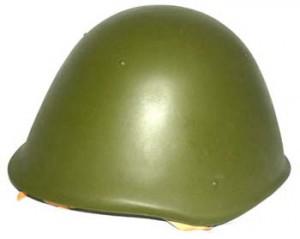
Russian scientists from the Institute began to find a solution to protect the ordinary soldier's head. Soon the steel helmets NL-68 will be completely replaced with polymer helmets 6B26, which by its characteristics at times superior to conventional steel. They easily withstand hits from a Makarov pistol from a distance of 5 m. The same thing happened with the imitation of fragments - the ball just stuck in the helmet. Besides that. weight polymer helmet just 900 By the way, the US military has long switched to plastic helmets, which, however, are inferior to our razrabotkam.Polimerny helmet consists of glued pressed sheets of Kevlar. In Russia, this fabric CBM is no different in characteristics from the American counterpart (Kevlar).
Americans Kevlar sheets bonded with resin, which deteriorates the ballistic properties, thereby forcing increased number of layers, making harder helmet (1, 5 kg). Russian scientists sandwiched between layers of polyethylene and polypropylene fabric that at first makes the helmet tougher, and secondly, under certain temperature and pressure, perfectly glued tissue without damaging its structure.
Price polymeric helmets significantly higher steel. On average, a helmet 6B26 worth 11,000 rubles. Naturally, our glorious Ministry of Defence is in no hurry to buy them in large numbers, preferring upgraded NL-68 with an additional polymer layer protects the head from shrapnel, but not from bullets. This is not surprising, because our army continues to lack of funds, despite the huge sell-off excess land and property.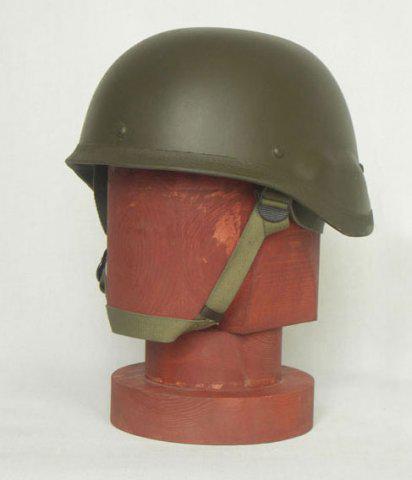
7, 62-mm Kalashnikov assault rifle (AK, also known as AK-47 index Grau - 56-A-212) - Machine developed by M. Kalashnikov in 1947. AK and its variants are the most common small arms in the world. According to many experts, it is the standard for reliability and ease of maintenance, as described Fedor Tokarev AK characterized as a "reliable in operation, high accuracy and precision shooting, relatively lightweight"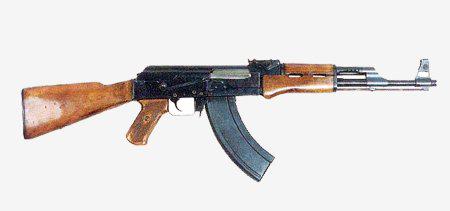
5, 45-mm Kalashnikov assault rifle (AK74, GRAU index - 6P20, also found the names of the AK-74, AK 74) - automatic caliber 5, 45 mm, developed in 1970 and put into service in 1974. It is a further development of AKM. Development AK74 associated with the transition to a new cartridge maloimpulsnogo 5, 45 × 39 mm.
AKS74 (GRAU index - 6P21) - AK74 variant with a folding metal butt sideways triangle shape. Designed for use in airborne troops (machine with non-folding butt can not be conveniently and safely positioned in the harness of the parachute). Replaced AK74M having collapsible plastic priklad.
AKS-74
AKS-74 with a bayonet.
F-1 grenade (GRAU index - 57-G-721) - Hand antipersonnel garnet. Intended to engage manpower in a defensive battle. Because of the dispersion of a large radius of fragments can only throw her from behind cover of an armored personnel carrier or tanka.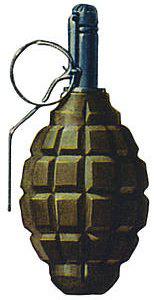
Soviet hand grenade RGD-5 (GRAU index - 57-G-717) refers to anti-fragmentation hand grenades remote actions offensive type. This means that it is designed to defeat enemy personnel shrapnel shell during its explosion. To target a grenade is delivered at the expense of her throwing hand soldier. Remote actions - means that the grenade will explode after a certain time (3, 2-4, 2 seconds) after its release, regardless of other conditions. Offensive type - it means that a grenade have a small weight and fly at a distance less than the possible range of broska.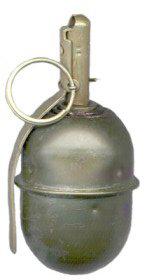
Hand grenade RGO - hand antipersonnel fragmentation defensive shock-remote.
Intended to engage manpower in a defensive battle. To target a grenade is delivered only by her soldier throwing hand.
The radius of splinter grenade (guaranteed) 50 meters, the radius of 200 meters of a possible defeat. According to the general performance characteristics similar to the F-1 grenade.
Fuse RGS cocked only by 1.3-1.8 seconds. after the safety lever is released. If the grenade explosion occurred not from the fuse percussion grenade explosion occurs through 3.2-4.2 seconds after the pressure release lever. Before the pre-cast, remove the retaining ring by pushing the lever with your fingers to the body of the grenade.
Grenade painted in olive-gray tsvet.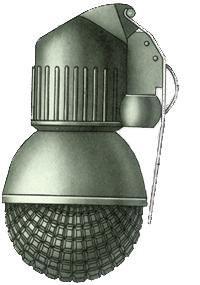
7 62-mm machine gun Kalashnikov (PC) - a machine gun, designed by Mikhail Kalashnikov machine gun as a replacement for PDM. PC was adopted by the Soviet Army in 1961, and after a few years began to be delivered abroad in the friendly Soviet state. It has been used in almost all the wars and armed conflicts of the second half of the XX century. PC - machine gun with bipod, and its modification, intended for shooting with a tripod, received the designation PCB (easel). In 1969, a new model of lesser weight and easier to use - PTP. It was designed as a tank machine gun PKT, equipped with electric trigger. It can be installed not only on the tanks, and other armored fighting mashinah.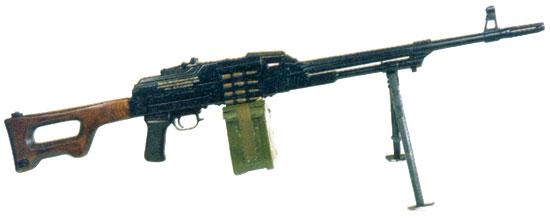
RMB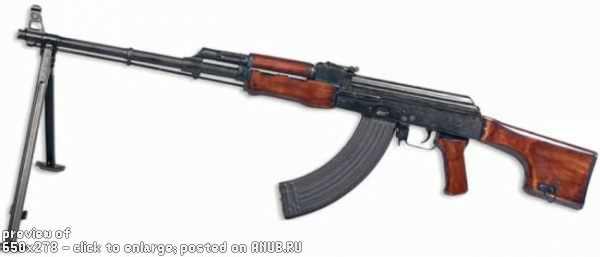
PKK

on mannequin wearing field uniform color "Flora"

Flora - the most common colors of camouflage Russian military. Drawing creates optical illusions dissolve the silhouette as a close and at a distance against the backdrop of the nature of central Russia, but is not well suited for the mountains of the Caucasus. Developed in the late 90s, it has some similarities with the Soviet coloring "Bhutan" and the American "tiger."

Russian Digital camouflage. "Digital Flora" - a new pixel camouflage for the Russian Armed Forces.

Steel Helmet (USA-68) spread from the Soviet army and used seychas.Nepriyatny secret: helmet, known to us for Personnel movies and news from the hotspots, protects the soldier's head slightly better than usual hats ushanki.Na tests combined arms helmet Russian army school -68, which for 40 years to protect the head of our infantry, in which he is being fired from a Makarov pistol from a distance of 5 meters, it became clear that conventional steel bullet fired from far the most powerful gun helmet hit Bang Bang! I wonder what will happen when the helmet will head soldier.
Scientists Research Institute conducted an interesting experiment began: from what distance the legendary school-68 still be able to hold at least a bullet legendary Makarov. It was found that the bullet helmet hold only at a distance of about 200 meters! But from this distance, even to get to the man from a Makarov almost impossible. On the other hand, the NL-68 is positioned as the Ballistic helmet, pistol shot he did not have to keep. However, another test showed that the steel ball with a diameter of 6 mm and a weight of 1 g easily penetrates the steel shell of the helmet. The speed of the ball is 500 m / s. On the battlefield of fragments of about 80%.
It turns out that all-arms helmet saves almost no one striking means of modern warfare, not counting the main instrument of the proletariat - stones and bottles. Moreover, it loads a fighter extra ballast, because the weight of the NL-68 is slightly less than 1, 5 kg and is 3 extra horn for Kalashnikov.

Russian scientists from the Institute began to find a solution to protect the ordinary soldier's head. Soon the steel helmets NL-68 will be completely replaced with polymer helmets 6B26, which by its characteristics at times superior to conventional steel. They easily withstand hits from a Makarov pistol from a distance of 5 m. The same thing happened with the imitation of fragments - the ball just stuck in the helmet. Besides that. weight polymer helmet just 900 By the way, the US military has long switched to plastic helmets, which, however, are inferior to our razrabotkam.Polimerny helmet consists of glued pressed sheets of Kevlar. In Russia, this fabric CBM is no different in characteristics from the American counterpart (Kevlar).
Americans Kevlar sheets bonded with resin, which deteriorates the ballistic properties, thereby forcing increased number of layers, making harder helmet (1, 5 kg). Russian scientists sandwiched between layers of polyethylene and polypropylene fabric that at first makes the helmet tougher, and secondly, under certain temperature and pressure, perfectly glued tissue without damaging its structure.
Price polymeric helmets significantly higher steel. On average, a helmet 6B26 worth 11,000 rubles. Naturally, our glorious Ministry of Defence is in no hurry to buy them in large numbers, preferring upgraded NL-68 with an additional polymer layer protects the head from shrapnel, but not from bullets. This is not surprising, because our army continues to lack of funds, despite the huge sell-off excess land and property.

7, 62-mm Kalashnikov assault rifle (AK, also known as AK-47 index Grau - 56-A-212) - Machine developed by M. Kalashnikov in 1947. AK and its variants are the most common small arms in the world. According to many experts, it is the standard for reliability and ease of maintenance, as described Fedor Tokarev AK characterized as a "reliable in operation, high accuracy and precision shooting, relatively lightweight"

5, 45-mm Kalashnikov assault rifle (AK74, GRAU index - 6P20, also found the names of the AK-74, AK 74) - automatic caliber 5, 45 mm, developed in 1970 and put into service in 1974. It is a further development of AKM. Development AK74 associated with the transition to a new cartridge maloimpulsnogo 5, 45 × 39 mm.

AKS74 (GRAU index - 6P21) - AK74 variant with a folding metal butt sideways triangle shape. Designed for use in airborne troops (machine with non-folding butt can not be conveniently and safely positioned in the harness of the parachute). Replaced AK74M having collapsible plastic priklad.

AKS-74

AKS-74 with a bayonet.
F-1 grenade (GRAU index - 57-G-721) - Hand antipersonnel garnet. Intended to engage manpower in a defensive battle. Because of the dispersion of a large radius of fragments can only throw her from behind cover of an armored personnel carrier or tanka.

Soviet hand grenade RGD-5 (GRAU index - 57-G-717) refers to anti-fragmentation hand grenades remote actions offensive type. This means that it is designed to defeat enemy personnel shrapnel shell during its explosion. To target a grenade is delivered at the expense of her throwing hand soldier. Remote actions - means that the grenade will explode after a certain time (3, 2-4, 2 seconds) after its release, regardless of other conditions. Offensive type - it means that a grenade have a small weight and fly at a distance less than the possible range of broska.

Hand grenade RGO - hand antipersonnel fragmentation defensive shock-remote.
Intended to engage manpower in a defensive battle. To target a grenade is delivered only by her soldier throwing hand.
The radius of splinter grenade (guaranteed) 50 meters, the radius of 200 meters of a possible defeat. According to the general performance characteristics similar to the F-1 grenade.
Fuse RGS cocked only by 1.3-1.8 seconds. after the safety lever is released. If the grenade explosion occurred not from the fuse percussion grenade explosion occurs through 3.2-4.2 seconds after the pressure release lever. Before the pre-cast, remove the retaining ring by pushing the lever with your fingers to the body of the grenade.
Grenade painted in olive-gray tsvet.

7 62-mm machine gun Kalashnikov (PC) - a machine gun, designed by Mikhail Kalashnikov machine gun as a replacement for PDM. PC was adopted by the Soviet Army in 1961, and after a few years began to be delivered abroad in the friendly Soviet state. It has been used in almost all the wars and armed conflicts of the second half of the XX century. PC - machine gun with bipod, and its modification, intended for shooting with a tripod, received the designation PCB (easel). In 1969, a new model of lesser weight and easier to use - PTP. It was designed as a tank machine gun PKT, equipped with electric trigger. It can be installed not only on the tanks, and other armored fighting mashinah.

RMB

PKK
